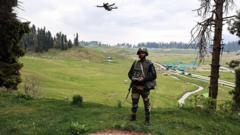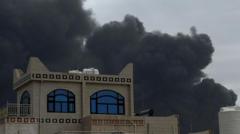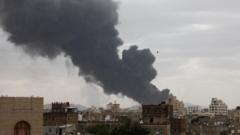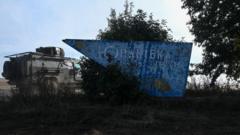In recent weeks, U.S. military efforts in Yemen, particularly Operation Rough Rider, have resulted in substantial expenditure without achieving significant strategic victories against the Iranian-backed Houthi militia, according to Pentagon disclosures.
U.S. Military Operations in Yemen Face Challenges Despite Heavy Bombardment

U.S. Military Operations in Yemen Face Challenges Despite Heavy Bombardment
Pentagon’s $200 million investment in Operation Rough Rider yields limited success against resilient Houthi forces.
The Biden administration recently launched intensified airstrikes against Houthi militants in Yemen, amassing a staggering $200 million in mission costs within just three weeks. President Trump claimed that these relentless strikes, initiated on March 15, had “decimated” the Houthi forces. However, reports from closed briefings reveal a more nuanced reality.
Despite the heavy bombardment, U.S. military officials privately reveal to Congress and allied nations that their success has been limited, falling short of expectations in dismantling the Houthi’s extensive underground networks of missiles and drones. Insiders confirmed that damage assessments indicate that the current operations are significantly more aggressive than previous engagements by the Biden administration but still lack impactful results.
Houthi fighters have demonstrated remarkable resilience, reinforcing their strategic locations against U.S. attacks. As a result, the strikes have struggled to substantially disrupt the militia's ongoing missile threats targeting commercial vessels in the Red Sea, frustrating U.S. military objectives.
In addition to munitions costs, approximately $200 million has been spent on deploying operations, which includes the positioning of two aircraft carriers, B-2 bombers, and an escalated presence of fighter jets and missile defenses like the Patriot and THAAD systems.
As the situation evolves, the American military must contend with not only logistical strains but also the challenges posed by an entrenched adversary capable of adapting and fortifying against punitive measures.
Despite the heavy bombardment, U.S. military officials privately reveal to Congress and allied nations that their success has been limited, falling short of expectations in dismantling the Houthi’s extensive underground networks of missiles and drones. Insiders confirmed that damage assessments indicate that the current operations are significantly more aggressive than previous engagements by the Biden administration but still lack impactful results.
Houthi fighters have demonstrated remarkable resilience, reinforcing their strategic locations against U.S. attacks. As a result, the strikes have struggled to substantially disrupt the militia's ongoing missile threats targeting commercial vessels in the Red Sea, frustrating U.S. military objectives.
In addition to munitions costs, approximately $200 million has been spent on deploying operations, which includes the positioning of two aircraft carriers, B-2 bombers, and an escalated presence of fighter jets and missile defenses like the Patriot and THAAD systems.
As the situation evolves, the American military must contend with not only logistical strains but also the challenges posed by an entrenched adversary capable of adapting and fortifying against punitive measures.




















